Lighting Tips
How Many Recessed Lights Do I Need? Expert Guide to Perfect Lighting Layout
One of the most common questions homeowners ask when planning lighting is: “How many recessed lights do I need?” Or, in other words: “How many can lights or pot lights do I need for my room?”
While terms like can lights, pot lights, and even canned lights are often used interchangeably, they all refer to recessed lighting – fixtures installed flush with the ceiling to provide a clean, streamlined look. In some cases, you may also see the term downlight, though that often refers to the direction of the beam rather than the fixture style.
So, is there a difference between can light vs recessed light or pot light vs recessed light? Not really – they describe the same category of lighting, just using different terminology depending on region or context.
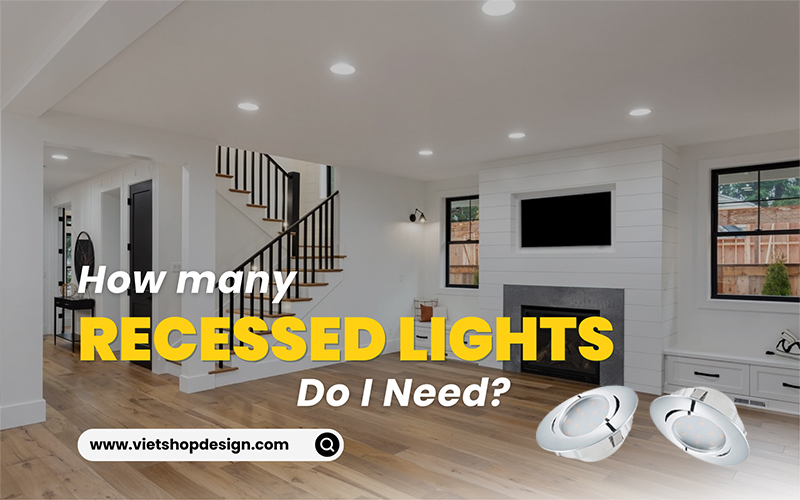
Understanding how many recessed lights (or can lights) you need depends on several factors: room size, ceiling height, lighting goals, and fixture type. If you install too few, your space may feel dim and uneven. Too many, and it can feel harsh, over-lit, and even clinical.
In this expert guide, we’ll break down everything you need to know – including spacing rules, layout tips, and even how many can lights per square foot you might need – to help you build the perfect recessed lighting plan for your space.
Key Factors That Affect the Number of Recessed Lights Needed
Before diving into any recessed lighting calculator or layout tool, it’s essential to understand the main factors that influence how many lights you’ll need.
1. Room Size and Dimensions
The most direct factor is the size of your room in square feet. A large open-concept living room will require more lights than a small bedroom or hallway. But don’t stop at just the floor area – ceiling height also plays a critical role.
A higher ceiling (10 ft or more) may require tighter spacing or higher-lumen lights, whereas a standard 8-ft ceiling allows more flexibility. We’ll also look at how to calculate the number of can lights per square foot later in this guide.
2. Type and Purpose of the Room
Different rooms have different lighting needs:
- Living rooms benefit from soft, ambient lighting using fewer fixtures.
- Kitchens require bright, task-oriented lighting, especially over countertops or islands.
- Bathrooms demand even, shadow-free lighting near mirrors.
- Bedrooms tend to work best with warm, adjustable light.
This will influence whether you need 4 inch or 6 inch can lights, as smaller fixtures offer a more focused beam – ideal for task lighting – while larger ones distribute light more broadly.
3. Lighting Type: Ambient, Task, or Accent
- Ambient lighting (general light) often requires evenly spaced recessed lights throughout the ceiling.
- Task lighting (like over a kitchen island or reading nook) may need closer spacing and directional trims.
- Accent lighting focuses on highlighting artwork, textures, or architectural details.
The lighting purpose helps determine how many pot lights do I need or how many canned lights you should install in addition to other light sources.
4. Fixture Size and Beam Spread
Choosing between 4 inch or 6 inch can lights can affect quantity. Smaller 4-inch lights may require more fixtures to achieve the same coverage, especially in rooms with higher ceilings or for detailed tasks. Beam spread also plays a role – narrower beams require closer spacing.
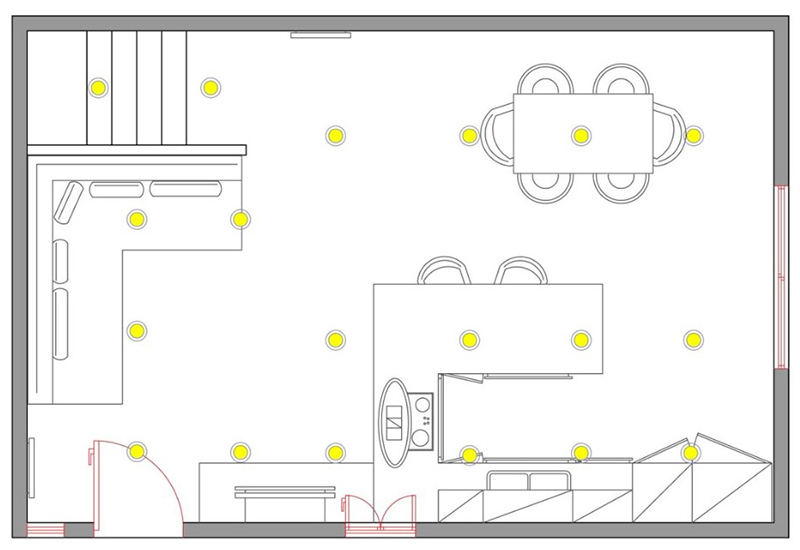
Recessed Lighting Spacing Rules
Even if you’ve chosen the right number of lights, poor placement can ruin your lighting plan. Uneven spacing leads to dark corners, overlapping beams, or harsh shadows. Fortunately, you don’t need to guess – just follow a few proven rules, or use a recessed lighting spacing calculator to help visualize your layout.
1. Use the Recessed Lighting Formula
A simple rule of thumb:
Space your recessed lights apart by half the ceiling height.
For example:
- For an 8-foot ceiling → place lights about 4 feet apart
- For a 10-foot ceiling → space them 5 feet apart
This is often referred to as the recessed lighting formula, and it works well for general ambient lighting.
2. Maintain Proper Distance from Walls
Avoid placing lights too close to walls, which can cause unwanted glare or shadow lines.
Keep at least 2 to 3 feet from walls to the nearest light fixture.
This tip applies whether you’re using recessed lights, pot lights, or can lights. A pot light spacing calculator can help ensure smooth and even coverage across the entire ceiling.
3. Adjust Spacing for Task or Accent Lighting
If you’re lighting a kitchen island, vanity, or artwork, you may need closer spacing than the general formula suggests. Task lighting often requires focused beams with less space between fixtures. A good recessed light placement calculator will allow you to map this precisely.
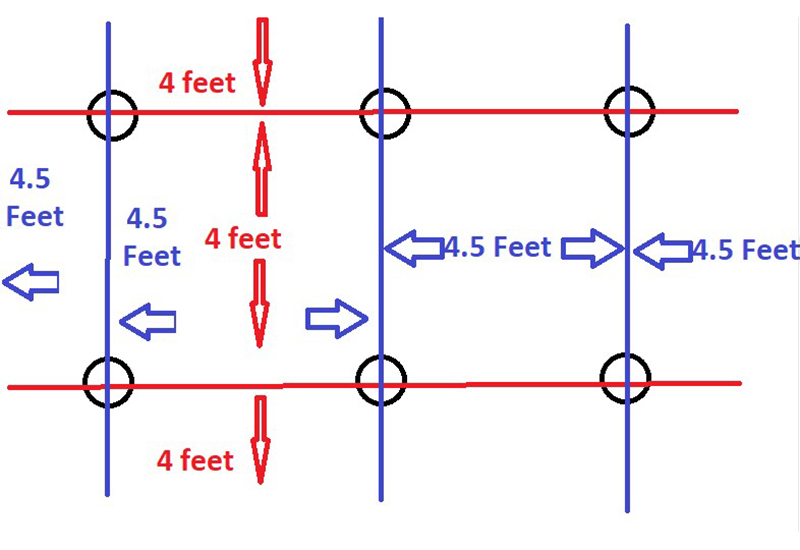
How to Calculate Recessed Lighting Layout (Step-by-Step)
Now that you understand the rules for spacing, it’s time to figure out exactly how many recessed lights you need. You can use an online recessed lighting calculator or follow this simple method by hand.
Step 1: Measure Your Room
Find your room’s length and width in feet. Multiply them to get the total square footage.
Example:
12 ft × 16 ft = 192 sq ft
Step 2: Choose the Right Foot-Candle Level
Lighting needs vary by room type. Use the following guide for lumens per square foot (aka foot-candles):
| Room Type | Recommended Foot-Candles |
|---|---|
| Living Room | 10–20 |
| Bedroom | 10–20 |
| Kitchen (general) | 30–40 |
| Kitchen (task) | 50–75 |
| Bathroom | 70–80 |
| Hallway | 5–15 |
Example (Kitchen):
192 sq ft × 40 foot-candles = 7,680 lumens needed
Step 3: Choose Your Fixture Output
Most modern recessed LED lights produce 600–900 lumens per fixture.
Let’s use 800 lumens per light as an example.
Step 4: Do the Math
Now divide total lumens needed by lumens per fixture:
7,680 ÷ 800 = 9.6 → round up to 10 fixtures
This is your estimated count using the LED recessed lighting calculator method.
Step 5: Plan Your Layout
Use the spacing formula (ceiling height ÷ 2) to map light positions. For more precise layouts, you can try tools like:
- Recessed lighting layout calculator
- Recessed can light calculator
- Free recessed lighting calculator (available from lighting brands or home improvement websites)
These tools help avoid guesswork and ensure proper symmetry and coverage across your ceiling – whether you’re doing a kitchen remodel or planning new construction.
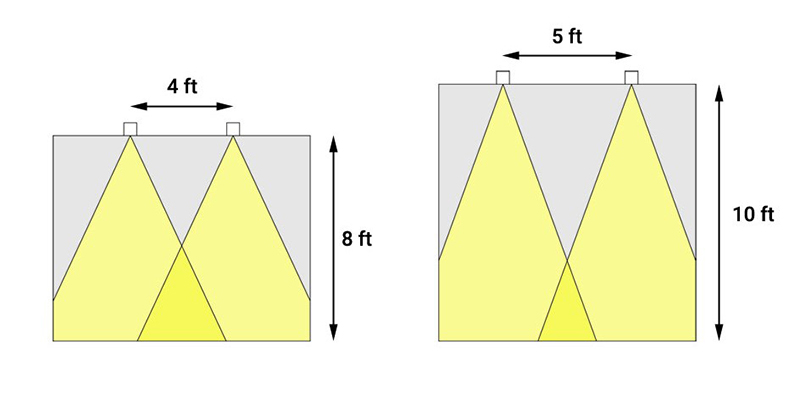
Sample Lighting Calculation by Room Type
Now that you know how to use the recessed lighting formula, let’s look at real-world examples using the method step-by-step. These samples show how many recessed lights you’ll need depending on room size, brightness goals, and fixture type.
1. Recessed Lights in Living Room (General Ambient Lighting)
- Room Size: 15 ft × 18 ft = 270 sq ft
- Foot-candles needed: 15
- Total lumens: 270 × 15 = 4,050
- Fixture Output: 800 lumens
- Lights Needed: 4,050 ÷ 800 ≈ 5.1 → round up to 6
You can use 6-inch recessed lights here, spaced 5–6 feet apart, to create even and soft ambient light.
If you’re wondering how many 6 inch recessed lights do I need for a living room, this example gives a realistic answer.
2. Kitchen Recessed Lighting (General + Task Lighting)
- Room Size: 12 ft × 14 ft = 168 sq ft
- Foot-candles needed: 40
- Total lumens: 168 × 40 = 6,720
- Lights Needed: 6,720 ÷ 800 = 8.4 → Use 9 fixtures
In kitchens, especially over islands or prep areas, 4-inch recessed lights are ideal for task lighting.
So if you’re asking, how many 4 inch recessed lights do I need for a kitchen? The answer depends on your layout, but you may use 4–5 just for the island area alone.
3. Bathroom Recessed Lighting
- Room Size: 8 ft × 10 ft = 80 sq ft
- Foot-candles needed: 70
- Total lumens: 80 × 70 = 5,600
- Lights Needed: 5,600 ÷ 800 = 7 → Install 7 small fixtures
Bathrooms typically benefit from 4-inch can lights, especially over mirrors and sinks where precision is important.
4. Bedroom Recessed Lighting
- Room Size: 12 ft × 12 ft = 144 sq ft
- Foot-candles needed: 15
- Total lumens: 2,160
- Lights Needed: 2,160 ÷ 800 = 2.7 → Use 3 to 4 lights
Use 6-inch recessed lights to create soft, ambient lighting. Pair with bedside lamps for layered control.
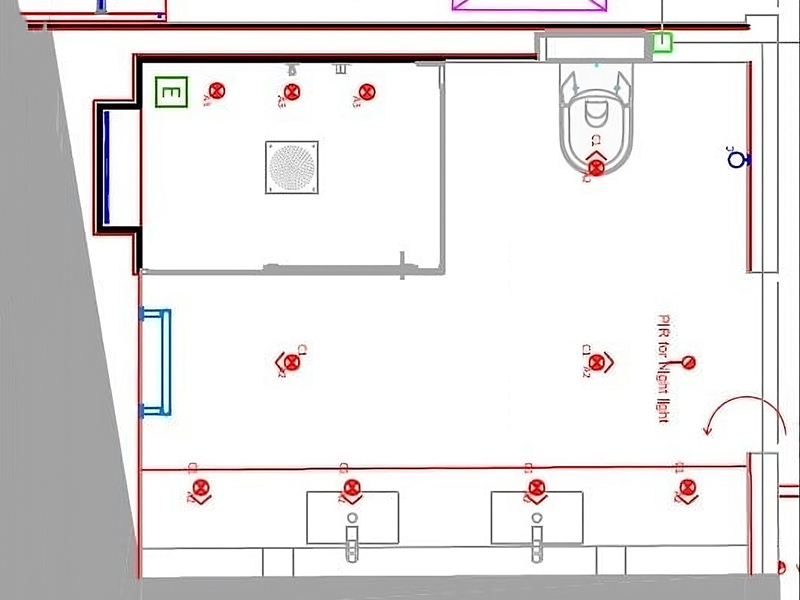
Tip: 4 Inch or 6 Inch Can Lights?
- Use 4-inch recessed lights for:
- Task lighting (kitchen counters, bathroom mirrors)
- Accent lighting (artwork, small spaces)
- Use 6-inch recessed lights for:
- General lighting (living rooms, bedrooms, hallways)
- Fewer fixtures, broader beam coverage
So if you’re deciding between 4 inch or 6 inch can lights, let your room purpose and layout guide your choice.
Can Lights vs Canless Recessed Lighting – What’s the Difference?
Many homeowners ask: “Can light vs recessed light – what’s the difference?” The truth is, they’re the same thing. The term can light comes from the traditional cylindrical housing – a “can” – installed inside the ceiling. Recessed light is a broader term that includes both can-style and modern canless fixtures.
Similarly, in Canada and some U.S. regions, the term pot light vs recessed light is used – again, referring to the same type of fixture.
1. Can Lights (Traditional Housed Recessed Lights)
- Require a metal housing installed between ceiling joists
- Great for new construction or projects with attic access
- Compatible with a wide range of trim styles and bulb types
- Typically used with 6-inch sizes
These may require fewer fixtures due to their wide beam angle and deeper installation.
2. Canless Recessed Lights (Modern, All-in-One Fixtures)
- Ultra-thin, no housing required
- Ideal for remodels or ceilings with limited clearance
- Integrated LED technology = energy efficient
- Available in both 4-inch and 6-inch sizes
You may need more canless fixtures if the beam angle is narrower – especially when using 4-inch sizes.
Comparison Table
| Feature | Can Lights | Canless Recessed Lights |
|---|---|---|
| Installation Depth | Requires ceiling cavity | Ultra-thin profile |
| Ideal For | New construction, attic access | Remodels, tight ceilings |
| Fixture Size Options | 6″ common, 4″ also available | 4″ and 6″, often dimmable |
| Replaceable Bulb | Yes | No – integrated LED only |
| Beam Spread | Often wider | May require closer spacing |
| Quantity Needed | Fewer (with wider beam) | More (for even light coverage) |
In summary:
If you’re working with an existing ceiling and want easy installation, canless LED recessed lights are the best bet. For high ceilings or larger rooms, can lights may offer more powerful light with fewer fixtures.
Mistakes to Avoid When Planning Recessed Lighting
Even with the right number of fixtures, planning mistakes can leave your space poorly lit or awkward-looking. Here are some of the most common issues homeowners run into – and how to avoid them:
1. Installing Too Many Lights
Over-lighting a space can make it feel sterile and overly bright, especially in living areas or bedrooms.
Solution: Use a recessed lighting calculator to determine the correct lumen output for your space before deciding on the number of fixtures.
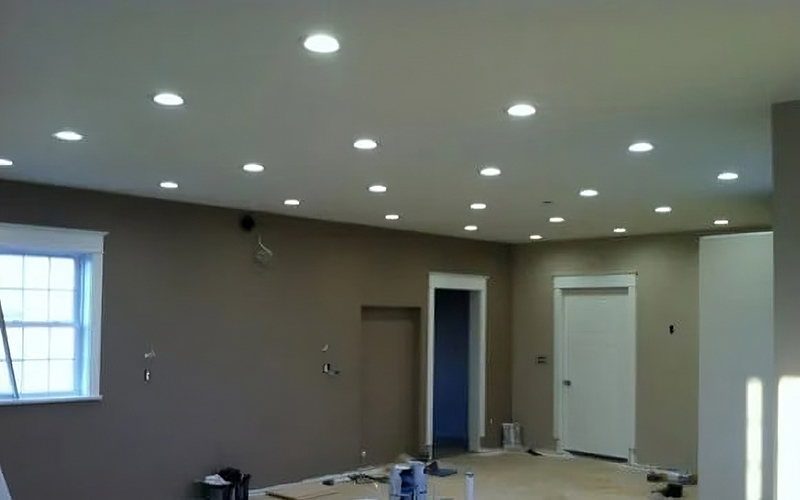
2. Installing Too Few Lights
This leads to dim corners and uneven lighting.
Solution: Follow a reliable recessed lighting spacing calculator or apply the rule: ceiling height ÷ 2 = ideal spacing.
3. Ignoring Ceiling Height
Ceiling height affects both light distribution and spacing. A plan made for an 8-ft ceiling won’t work well in a 12-ft room.
Solution: Use a LED recessed lighting calculator that factors in ceiling height and desired brightness level.
4. Poor Fixture Placement
Placing lights too close to walls or directly above seating areas creates glare and shadows.
Solution: Try a recessed light placement calculator or sketch out your furniture layout before marking fixture locations.
5. Not Using Dimmers
Without dimmers, you lose flexibility. Your space might be too bright during the day or too dim at night.
Solution: Install dimmable LED recessed lights with compatible switches for adjustable ambiance.
6. Forgetting About Task or Accent Needs
Recessed lights work great for general lighting, but not for everything. Relying solely on them might leave workspaces underlit.
Solution: Supplement recessed lighting with under-cabinet lights, pendant lights, or wall sconces where needed.
Tools & Resources to Help You Plan
Planning your lighting layout doesn’t have to be overwhelming. These tools can help you calculate, visualize, and confidently install your recessed lighting system.
1. Recessed Lighting Calculators (Online Tools)
Free and easy to use, these tools take your room’s dimensions and convert them into fixture counts, spacing, and layout suggestions.
Popular searches:
- Recessed lighting calculator
- Free recessed lighting calculator
- LED recessed lighting calculator
These tools often let you enter:
- Room size (length × width)
- Ceiling height
- Fixture type and lumen output
- Desired brightness level (foot-candles)
They then generate a layout and recommend the number of lights needed.
Suggest: https://blog.recessedlighting.com/recessed-lighting-calculator/
2. Recessed Lighting Spacing & Placement Calculators
Some calculators focus more on placement and beam coverage. A good recessed light placement calculator will help you avoid overlapping beams or dark spots, especially in rooms with irregular shapes or furniture.
You can also use a recessed lighting spacing calculator to visualize symmetrical grids or task-based lighting plans.
3. Home Design Software and Mobile Apps
Want a more visual approach? Use free or paid design apps like:
- Roomstyler 3D Home Planner
- SketchUp
- MagicPlan
These apps let you drag and drop lighting onto a digital room layout.
4. Lighting Brand Tools and Spacing Charts
Top brands like Halo, Lithonia, or Juno offer downloadable PDF guides and web tools that include:
- Fixture spacing tables
- Beam angle recommendations
- Compatible dimmer options
5. Consult a Pro (Optional but Smart)
If you’re still unsure about layout, ceiling insulation, or electrical load, talk to a lighting designer or licensed electrician. Even a short consultation can help avoid costly mistakes.
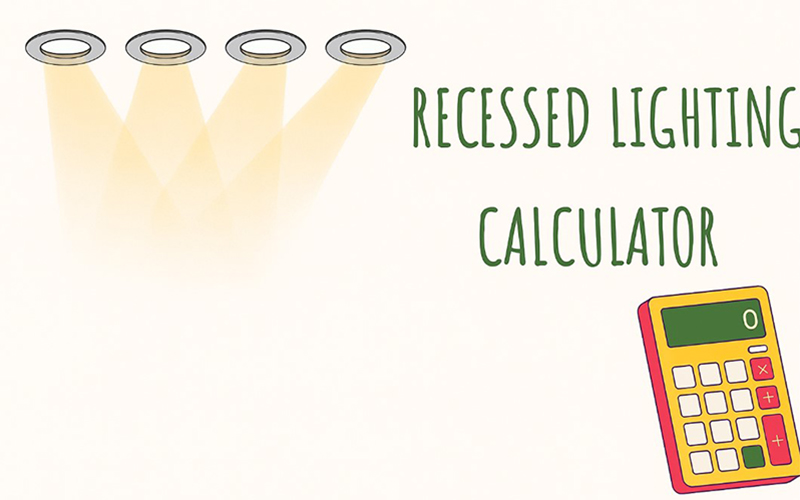
FAQs – Frequently Asked Questions
1. How many can lights do I need?
Use a recessed lighting calculator or the formula:
(Room square footage × recommended foot-candles) ÷ lumens per light
This will give you an accurate number based on room type and light output.
2. How many can lights per square foot is ideal?
There’s no fixed number per square foot. It depends on room function. For example:
- Living room: ~15 lumens/sq ft
- Kitchen: 30–50 lumens/sq ft
Use these figures in your lighting calculation to guide your decision.
3. How many LED lights on a 15 amp circuit?
Assuming 120V and 80% max load (~1,440 watts):
- Using 10W LED lights → 1,440 ÷ 10 = 144 lights
Be sure to include other devices on the same circuit in your total wattage.
4. How many LED lights on a 20 amp circuit?
With a 20 amp breaker (1,920W @ 80%), you can power:
- 1,920 ÷ 10 = 192 LED fixtures (at 10W each)
Always check local code and leave headroom on circuits.
5. How many 4 inch recessed lights do I need?
4-inch recessed lights have narrower beam angles. You’ll typically need more of them spaced closer together – ideal for:
- Bathrooms
- Task areas in kitchens
- Accent lighting
Use a recessed lighting layout calculator for precision.
6. How many 6 inch recessed lights do I need?
6-inch lights cast a wider beam, so fewer are required for general lighting. Use them in:
- Living rooms
- Bedrooms
- Hallways
Spacing can range from 4–6 ft depending on ceiling height.
7. Can I use pot lights and recessed lights together?
You can – but there’s no need to distinguish. Pot light vs recessed light is simply a matter of terminology (common in Canada vs U.S.). They are the same thing.
8. What’s the difference between can light vs recessed light?
Can light refers to the traditional cylindrical housing (“can”) installed into the ceiling. Recessed light is a broader term that includes both can and canless LED models. Functionally, they perform the same role.
9. Do I need an electrician to install recessed lighting?
If you’re replacing existing fixtures with canless lights, and you’re confident with wiring, it’s often a DIY-friendly project.
However, for new wiring, adding circuits, or cutting into insulation, a licensed electrician is highly recommended.
Conclusion & Lighting That Brings Warmth to Your Space
By now, you’ve learned everything you need to confidently answer the question: “How many recessed lights do I need?”
From recessed lighting formulas and layout calculators, to the differences between 4-inch and 6-inch can lights, your lighting plan should now feel much more achievable – whether for a cozy bedroom or a high-functioning kitchen.
Just remember:
- Match fixture type to room function
- Use spacing tools like a recessed light placement calculator
- Don’t overload your circuit – especially with LED fixtures
- Plan before you cut!
Looking for Beautiful, Handcrafted Lighting?
While recessed lighting is great for function, it’s the decorative lights that give your space soul. If you’re searching for unique, handcrafted lighting made from natural materials, we invite you to explore our collection at vietshopdesign.com.
We specialize in:
- Bamboo and rattan pendant lights
- Woven lampshades for dining areas, living rooms, and cozy corners
- Sustainable, artisan-made designs inspired by traditional Vietnamese craftsmanship
Each piece is handmade with care – perfect for homeowners, designers, or anyone looking to add warmth, character, and authenticity to their space.
✨ Ready to elevate your interior with lighting that tells a story today.





Unlock VIP Perks
Join as a priority member to receive gifts and be the first to access exclusive deals, our newest collections, and more...
Read More
10 Best Bamboo Rattan Furniture Ideas for your Home
In a world increasingly focused on sustainability and wellness, bamboo rattan furniture has found its [...]
Jul
Recessed Lighting Layout Guide: Room-by-Room Tips & Ideas
Whether you’re remodeling a kitchen, updating your bathroom, or designing a cozy basement retreat, a [...]
Jun
Recessed Lighting Installation Cost in 2025: Money-Saving Tips
Recessed lighting installation cost is one of the first things homeowners consider when planning to [...]
Jun
How to Change Recessed Lighting: Step-by-Step Guide
Recessed lighting – often referred to as can lights, pot lights, or downlights – is [...]
Jun
How Many Recessed Lights Do I Need? Expert Guide to Perfect Lighting Layout
One of the most common questions homeowners ask when planning lighting is: “How many recessed [...]
Jun
How to Install Recessed Lighting: Everything You Need to Know
How to Install Recessed Lighting is a common question among homeowners looking to upgrade their [...]
Jun
Best Bathroom Pendant Light Ideas to Elevate Your Space
When it comes to bathroom design, lighting plays a crucial role in setting the mood, [...]
Jun
Best Hotel Lighting Ideas That Will Wow Your Guests
Lighting plays a vital role in shaping the guest experience in any hospitality setting. From [...]
Jun
Product Collection
Rattan Pendant Light
86 Products
Bamboo Pendant Light
56 Products
Fabric Pendant Light
44 Products
Wood Pendant Light
9 Products
Rope Pendant Light
8 Products
Rattan Table Lamp
6 Products
Wabi Sabi Pendant Light
39 Products
Rattan Wall Sconce
5 Products